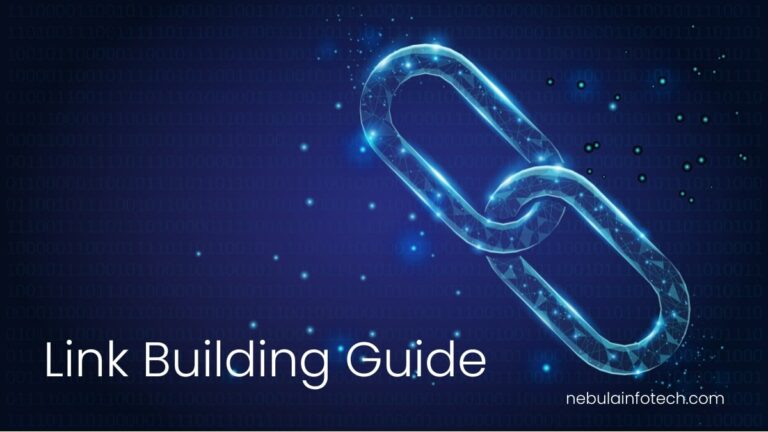The very first question that comes into our mind when launching our website is, “When will the visitors come?”
Some people automatically assume that by launching their website they will get the visitor for their business, but, this is not true.
To achieve this, you must employ various marketing techniques such as online marketing, branding, and offline marketing.
Google, being the most widely used and highly sophisticated search engine, relies on algorithms to rank websites, and to enhance the ranking of any new website, we must delve into these algorithms and strive to implement the basic principles that they employ for website ranking.
This guide will help you understand how you can bring organic traffic to a newly developed website. But first, let’s understand what is the Google Search Algorithm.
What is the Google Search Algorithm?
Google Search Algorithm are set of rules that Google uses to rank web pages for a particular keyword. These numerous algorithms work in tandem, with each playing a crucial role in determining a website’s ranking.
Certain factors hold greater significance than others for instance, content quality outweighs others in importance. For example- When you search for the term “Apple”, you intend to go to Apple’s website to purchase iPhone but, you may be taken to a fruit vendor’s website. The algorithm helps in understanding the user intent and providing users with a correct website.
8 Steps Guide to Bring Organic Traffic to a New Website
Although there are 100s of search ranking signals that Google uses to rank a website, there are some underlying principles to it as well as a basic technicality that contributes towards ranking a web page for a particular keyword.
In this guide, we will explore 8 steps you can use to bring organic traffic to a new website.
Choose a Good Domain
Choosing a domain can be tough especially when we want a branded one which may or may not be taken. But, this is very important as a good domain with keywords is important from both ranking and branding perspectives.
You’ll have to apply various permutations and combinations to find the best domain name for your business. Once you finalize your domain name, you can start website design based on the name and visual branding you’ve decided on.
Logical Site Structure
Every website has a site structure which helps Google in finding the hierarchy of the pages. Every website has some essential element like a menu, Home page, contact, about page, footer section, etc.
These elements are very important as it provides user as well as search crawler easy access to every page of the website. A website is a collection of different web pages hosted on the same domain name each linked to one another.
Logical URL Structure
URL Structure is important when it comes to ranking your website. You’ll have to be careful in creating the URL of your website as changing the URL changes the page itself and you’ll have to redirect the old URL to the new URL.
If you do not redirect then the user will get a 404 error which is not user-friendly also google will downgrade your website for that keyword.
This is why you should have a logical way of creating a URL. A good URL Structure will have the following characteristics-
- Standardized URL in lowercase
- Shorter path
- Using hyphen “-” for separating two words
- Have keywords in URL
- Do not include numbers like Top 20, or years like 2020 in your url. This way you can increase or change the year and reuse your page for next year or your next post.
Do Not Ignore Sitemap
Sitemap is an important page that you submit to the Google Search Console so that Google can have a list of all your website pages.
When you have a new website, the biggest challenge that you can face is to index your website in search engines. You can check your website’s indexation by Google Searching – “site:https://yourwebsite.com/”. This will list all the web pages that Google.
When you submit your sitemap, it becomes easy for search engines to get all the links of your web pages to crawl and rank subsequently.
Do Keyword Research
After planning and strategizing your website, the very first step for starting the SEO process is to do keyword research.
When you resolve all the technicalities, you’ll have to find those keywords to rank your website for, which can be done by doing keyword research.
A keyword has various aspects to it, which is explained below-
- Content type – Is the keyword blog post a product page or landing page, etc?
- Content format – Is the keyword for tutorials, listicles, how-to guides, recipes, free tools, etc.?
- Content angle – What is the dominant selling point, like low prices or how easy it is, etc?
When you have information related to the keyword’s nature, you can create your content to match this intent to the intention for the user to visit your website is satisfied which in turn satisfies Google’s algorithm.
Apart from aspects, you’ll also have to look at other technical details while doing keyword research like search volume, keyword difficulty, LSI Keywords, List of related keywords that can be used for ranking.
Focus on the Site’s Content
When you have a list of keywords with you, you’ll now have to create unique content related to the topic. There are recent Google updates that have made the content of the website a key element in ranking.
The content is primary when Google is ranking a website, especially after the Penguin Update, There are some rules that you can follow to keep your content high-quality, which are listed below-
- Keep Keyword Density in Mind- When you are creating content it is important to mention the keywords in your content naturally at least 3-4 times per 1000 words. Also, you’ll have to mention your target keyword in the title and sub-heading, in the first paragraph of your content.
- Content Quality and Quantity- A good practice is to have both quality and quantity meaning, write unique content that covers a particular topic comprehensively, and make sure that the content length is more than 2000 words.
- Content hierarchy- By hierarchy, your content must use H1, H2, H3, etc. tags in content to ensure that every topic has been covered perfectly. There are 6 heading tags in total, you’ll have to ensure that you write the content in a hierarchal format to ensure you cover the topic fully.
Set up a Backlink Campaign
Backlinks are very important to rank a website higher on Google SERPs. Backlinks are the links that other websites give you as a reference. Let’s say you sell Dog food and there is a blogger who wants to recommend your dog food to their visitors so, they will link your website for buying the dog food.
If you observe the internet, the entire internet is all about linking to one another through internal linking, external linking, etc.
The best way to get started with your Backlink campaign is to hunt your competitor’s backlinks. Just go to any good backlink extractor tool like Ahref, SEMRush, etc., and insert your competitor’s URL and you’ll find the list of backlinks your competitor has created.
You’ll just have to visit those URLs and try to get your website linked there as well. Now, some of the links will be paid or the webmaster may ask for a guest post. You can move further as per your marketing budget.
Additionally, you can make some generic links as well like business directory listings, forum posting, social media sharing, etc.
Track Your Performance and Optimize
Now, the biggest part of Digital marketing Comes which is Analyzing and Optimizing your performance. There is a lot of A/B testing involved in running an SEO Campaign.
You’ll have to observe the pattern and reflect upon what is working and what needs a different perspective to more further.
There are a lot of SEO tools and techniques that you can use to get your website ranked higher on Google Search. You can test these and based on the performance, you can build your campaign.
Conclusion
The journey of bringing organic traffic to a new website involves a blend of strategy and persistence, when you combine these with a deep understanding of Google Algorithms you can rank high in Google’s SERPs.
From Selecting a domain name to building a brand, you’ll always have to think about creating a lasting impact on the site visitors. The significance of a logical site structure and URL arrangement cannot be overstated, as it enhances user experience and aids search engine crawlers in navigating your site efficiently.
SEO is an ever-changing landscape and to navigate through this landscape you need to be adaptive and up-to-date with your knowledge base. We are a digital marketing company in Pitampura and are always open to helping businesses achieve their digital goals.
Continuous monitoring of your website’s performance and the agility to adapt are indispensable. Regularly track key metrics, analyze user behavior, and optimize your content and strategies accordingly.
In essence, bringing organic traffic to a new website is a multifaceted process that demands a holistic approach.
As the digital landscape continues to evolve, embracing a dynamic and data-driven mindset will be instrumental in navigating the complexities of the ever-changing SEO landscape.
I am Sunil Tarwara, a seasoned IT professional with over 13 years of hands-on experience in Website Development and Digital Marketing. With a deep understanding of the challenges faced by businesses, I have been trusted by hundreds of clients to achieve their digital goals. I have Master’s degree in Information Technology.
Apart from websites, I like hill stations.




